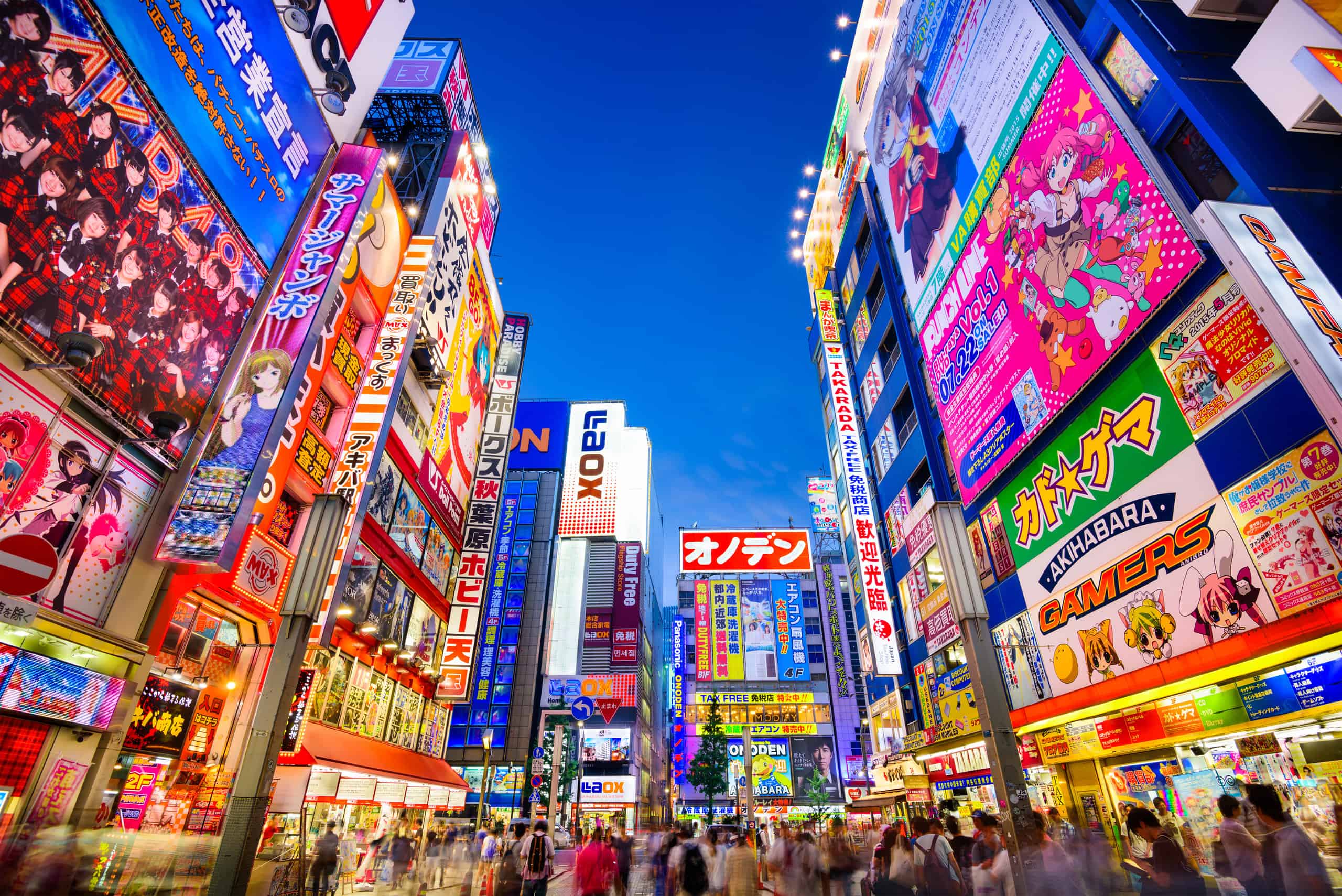Japan often tops the list of innovative and imaginative places in the world, making it a futuristic destination for sci-fi lovers. Thanks to its embrace of groundbreaking science and technology, most of Japan’s cityscapes look like a science fiction book brought to life.
Japan’s focus on the future stems primarily from the country starting over after the Allied bombing campaigns of World War II. According to the book The Metabolist Imagination by William O. Gardner, the war destroyed significant portions of nearly all of Japan’s major cities.
After the United States’ occupation, Japan had a unique opportunity to start fresh. The country quickly transformed many of its ashen cities into futuristic hubs. According to an essay by scholar Chauncy D. Harris in 1982, “In such a short period, no other major country has experienced so dramatic and thorough a transformation…or comparable concentration of population and industry.”
The nation’s residents are incredibly tech-savvy as well, often sporting the latest gadgets and avant-garde fashions. Internet cafes, robot-staffed restaurants, and other top-notch technology provide the perfect atmosphere for cyberpunk and science fiction lovers.
From major metropolises to scenic small towns, here are 10 locations in Japan to experience the future in real time.
1. Tokyo
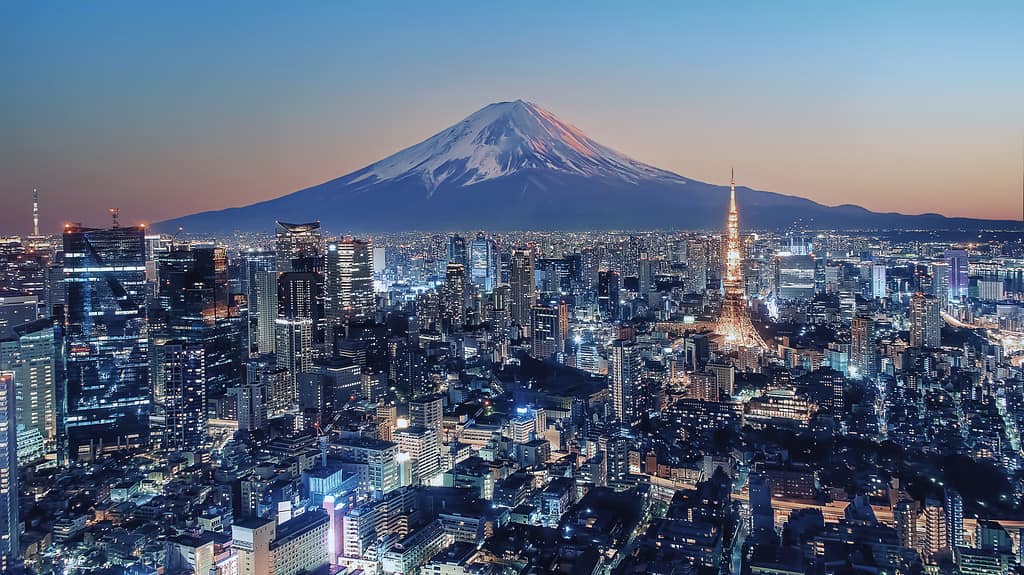
The tallest tower in the world, Tokyo Skytree, shines against the backdrop of Mount Fuji.
©StockByM/iStock via Getty Images
Tokyo, the capital of Japan, is currently the most advanced and populous city in the world. War and natural disasters like the Great Kanto earthquake of 1923 destroyed most of Tokyo’s traditional structures—allowing state-of-the-art design to take the lead.
The modern metropolis of Tokyo has inspired numerous sci-fi works, including the tech-noir films Blade Runner and Akira. Skyscrapers with bright neon lights dominate the city’s iconic skyline. Tokyo’s rail system is one of the busiest in the world, with an average of 40 million daily passengers, and includes speedy bullet trains.
Must-sees for sci-fi feel: Miraikan National Museum of Emerging Science and Innovation, Mode Gakuen Cocoon Tower, Shibuya Station
2. Osaka
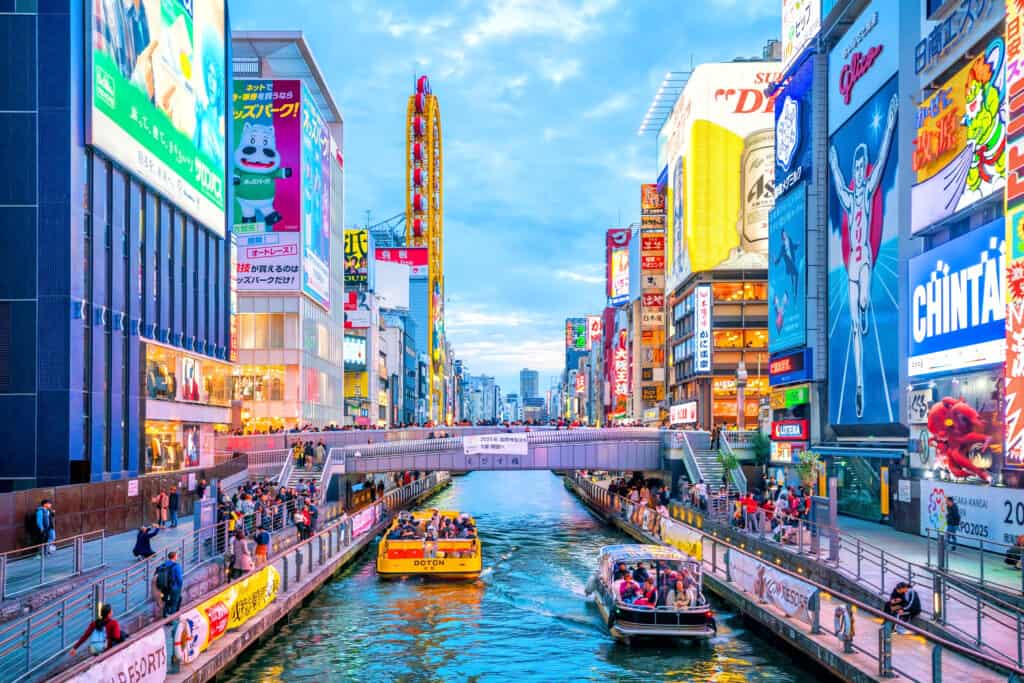
The vibrant streets along Osaka’s Dontonburi Canal feature bright billboards and neon nightclubs.
©f11photo/Shutterstock.com
Osaka is Japan’s third-largest city and a major commercial and cultural hub. It is the home of many trailblazing electronics and research corporations. Besides this, the city contains more than 750 canals and bridges. This gives Osaka a Venice-like appearance with a futuristic twist.
Industrialists built the now-seedy Shinsekai district more than 100 years ago. Though they had the future in mind, these grand visions eventually fell apart. The district currently exists as a nostalgic blend of retro-futurism. Vintage arcade machines, neon lights, fried street food, and eccentric shops dot the area’s alleyways.
Must-sees for sci-fi feel: “Den-Den Town,” Dontonburi, Gate Tower Building
3. Kyoto
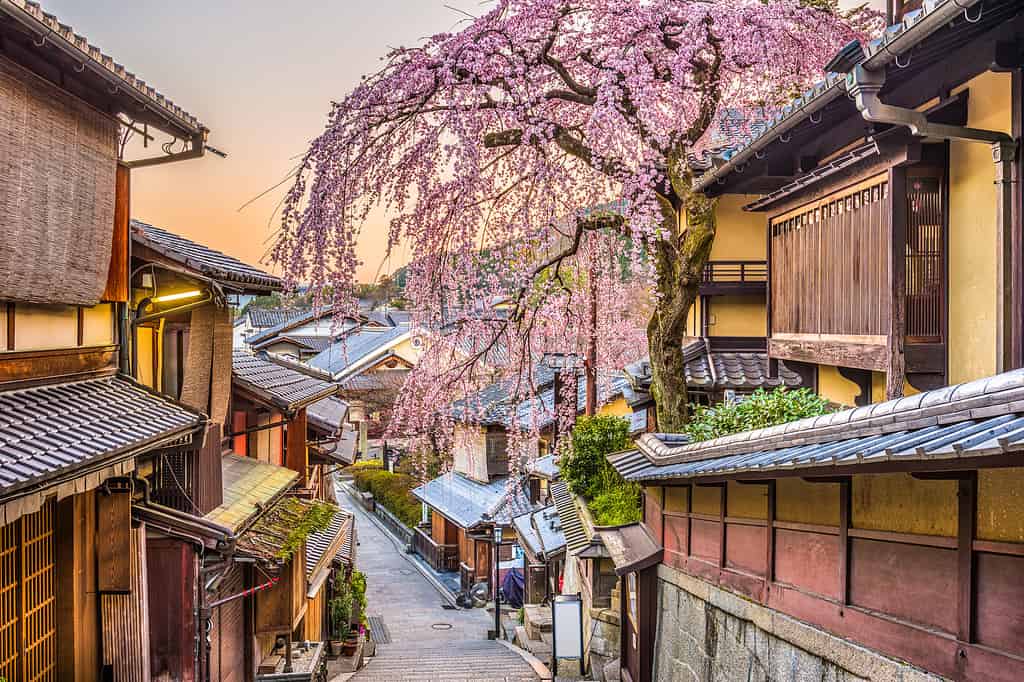
The town of Kyoto is the premier opportunity for science fiction lovers to step back in time.
©Sean Pavone/iStock via Getty Images
Kyoto is the cultural capital of Japan with its countless cherry blossoms and rich history. The city was one of the few urban areas that avoided attack during World War II. However, the fears of warfare and disaster remain in Kyoto. The town appears in the Godzilla franchise, which uses kanji as metaphors for nuclear weapons and radiation.
Outside of fiction, Kyoto contains more historical than modern structures such as gardens, shrines, and temples. That said, not all of Kyoto is traditional. The famous video game company Nintendo has its headquarters in the city. Kyoto is also the center of Japan’s film and entertainment industries.
Must-sees for sci-fi feel: 9 Hours Capsule Hotel, Kyoto City KYOCERA Museum of Art, Kyoto Station
4. Nagoya

The bright lights of Nagoya show a stunning skyline.
©ESB Professional/Shutterstock.com
Once a wealthy trading city, Nagoya has evolved to emphasize technology alongside its history of arts and culture. Nagoya boasts booming automotive and aviation industries, with the Toyota Motor Corporation situated on its border. Nagoya is also a leader in developing robot technology and materials engineering.
Retail continues to play an important part in the city’s economy, with many department stores getting their start in Nagoya. The theme parks Legoland Japan and Ghibli Park are also popular tourist destinations for children and adults alike.
Must-sees for sci-fi feel: JR Central Towers, Oasis 21, Toyota Kaikan Museum
5. Yokohama
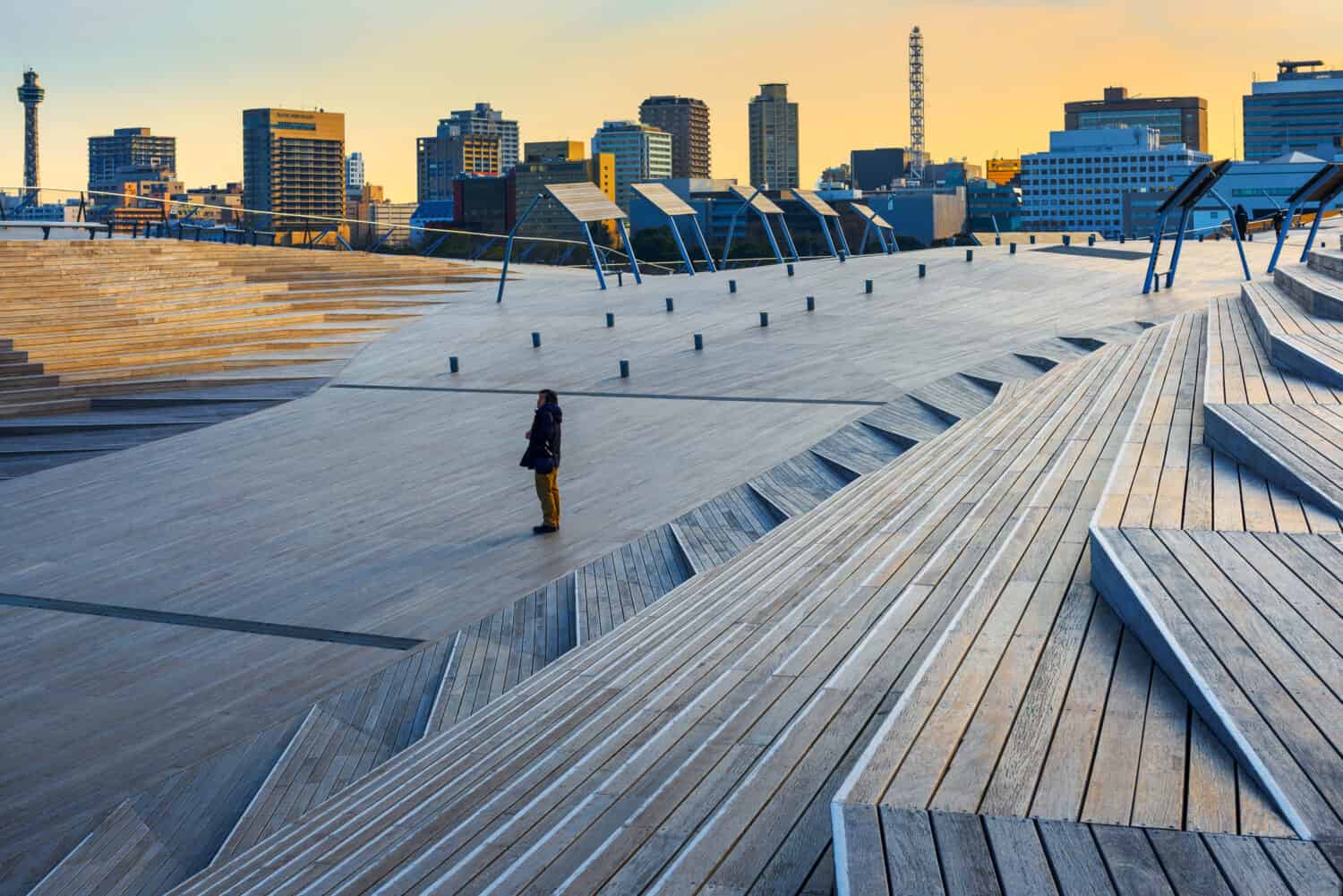
Osanbashi Pier in Yokohama is mesmerizingly modern.
©R7 Photo/Shutterstock.com
Yokohama, situated in Tokyo Bay, is Japan’s second-largest city and largest port city. It is also a high-tech industrial hub, containing the headquarters of popular companies Nissan, Isuzu, Salesforce Japan, and promising startups. Since the 1980s, the Minato Mirai 21 project has connected Yokohama’s important commercial areas. It sometimes goes by the name “Philadelphia and Boston of the Orient.”
Gundam, a popular Japanese military science fiction franchise, has also made its mark in the area. Gundam is a space opera and Japan’s equivalent of Star Wars. An entertainment complex devoted to sci-fi series overlooks the Yokohama Pier. The attraction features a noticeable 60-foot life-size Gundam robot with dozens of moveable parts. Unfortunately, the exhibit closes in 2024.
Must-sees for sci-fi feel: Gundam Factory Yokohama, Onsanbashi Pier, Yokohama Cosmo World theme park
6. Fukuoka
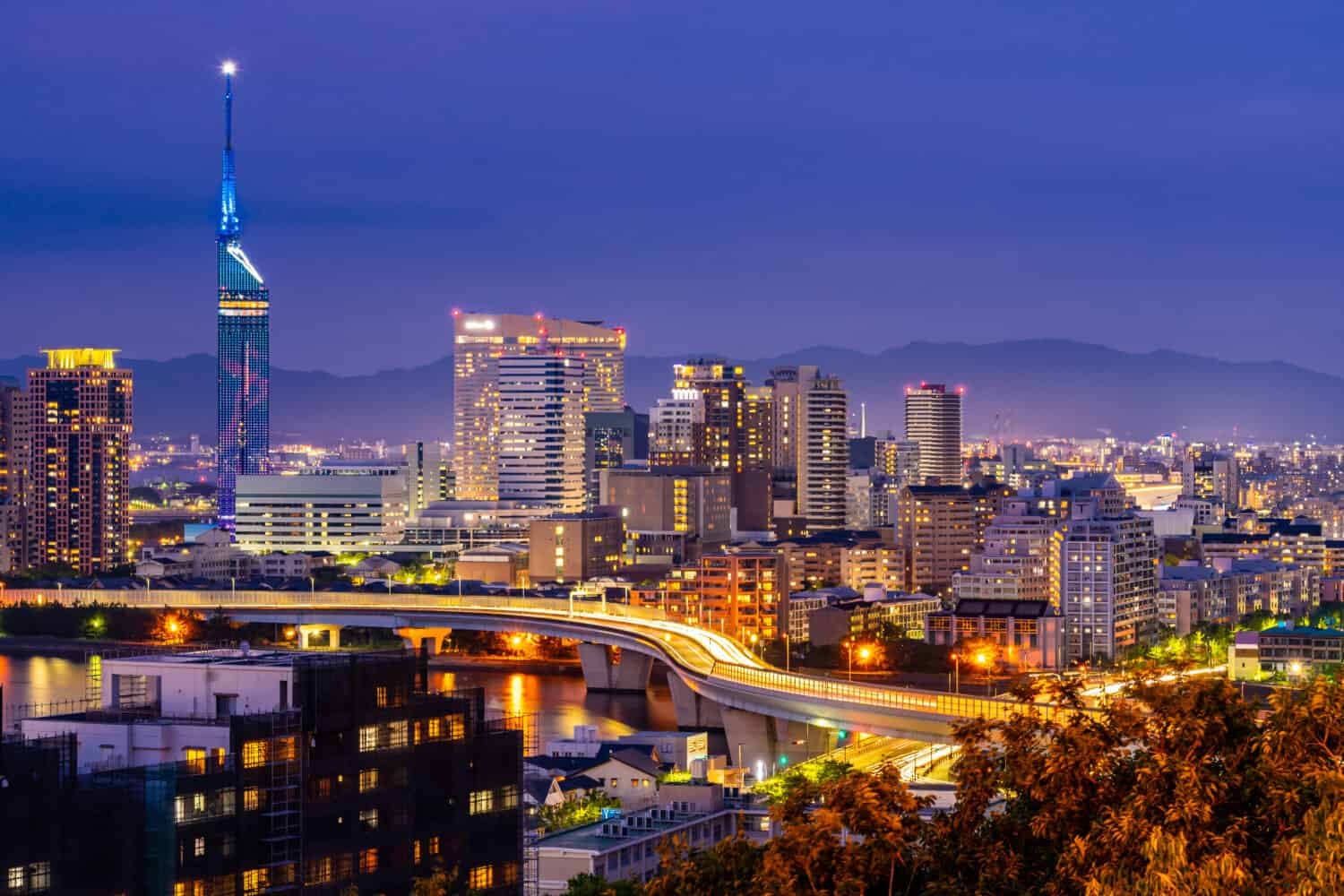
A popular Japanese port town, Fukuoka gives easy access to Asia’s mainland.
©vichie81/Shutterstock.com
Fukuoka is another Japanese port metropolis with stunning sights and golden sands. Its nickname is the “Gateway to Asia” due to its history of international commerce and tourism. The port town is also popular for its crowded outdoor food stalls, called yatai, that line the Naka River.
Fukuoka is the best city in Japan for startups, offering exclusive perks like the country’s first Startup Visa. Many of Fukuoka’s startups focus on clean and renewable energy sources. For example, as of 2015, the city is home to the world’s first hydrogen refueling station powered by sewage.
Must-sees for sci-fi feel: 010 Building, Miyako Hotel Hakata, Tenjin Underground Mall
7. Sendai
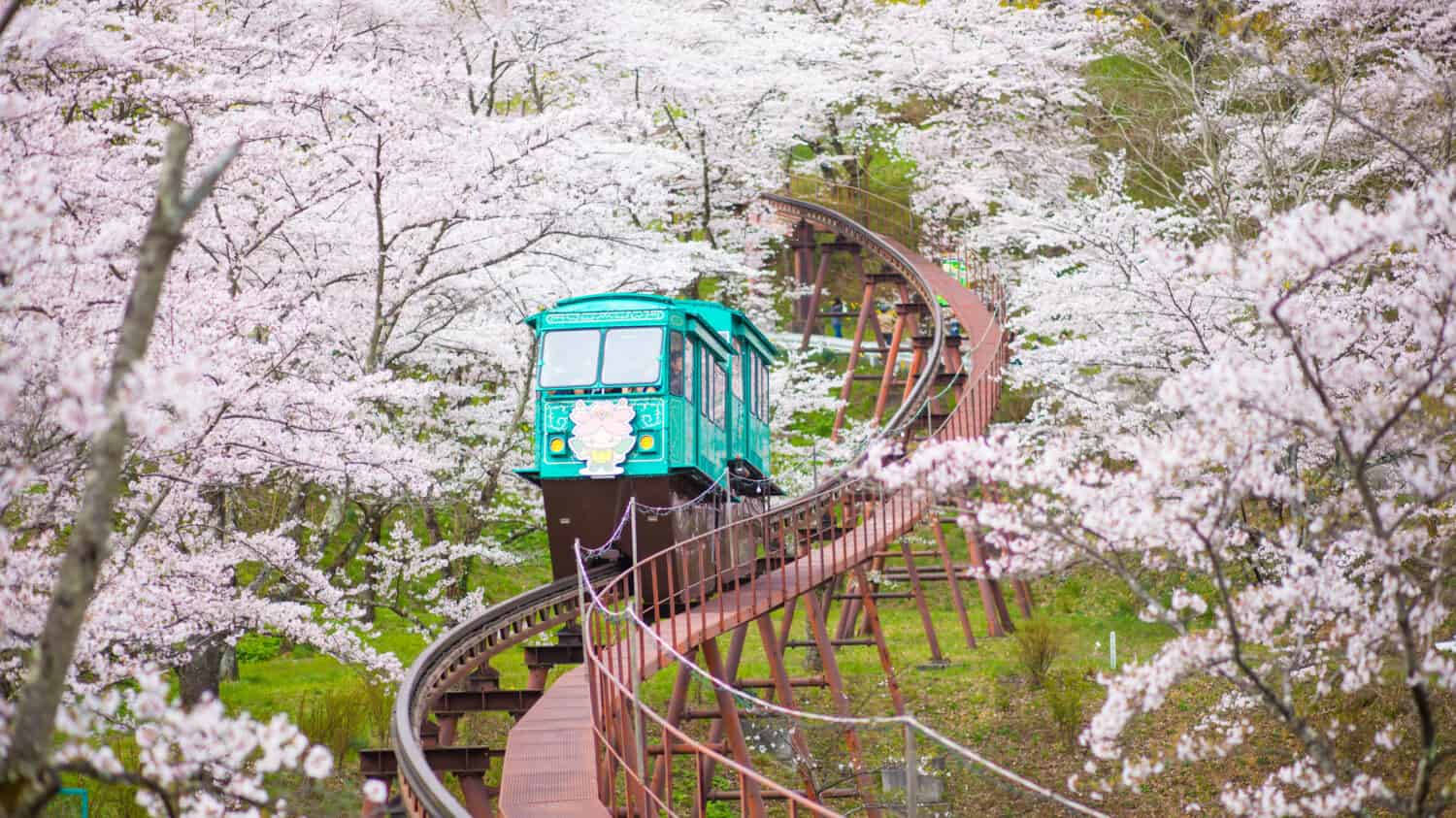
Sendai offers the best of both worlds with eco-friendly beauty and modern convenience.
©Phubet Juntarungsee/Shutterstock.com
Compared to the concrete jungles of Japan’s other major cities, Sendai blends contemporary living with existing natural beauty. The scenic town is famous for its research and innovation, with Tohoku University considered the best in the nation.
Sendai has lush greenery with abundant trees and plants, making it a popular destination for outdoor enthusiasts. This potentially makes it a good spot for arcology, a futuristic concept that blends ecology and architecture.
Must-sees for sci-fi feel: NanoTerasu, Sendai Mediatheque, Tanabata Star Festival
8. Aomori
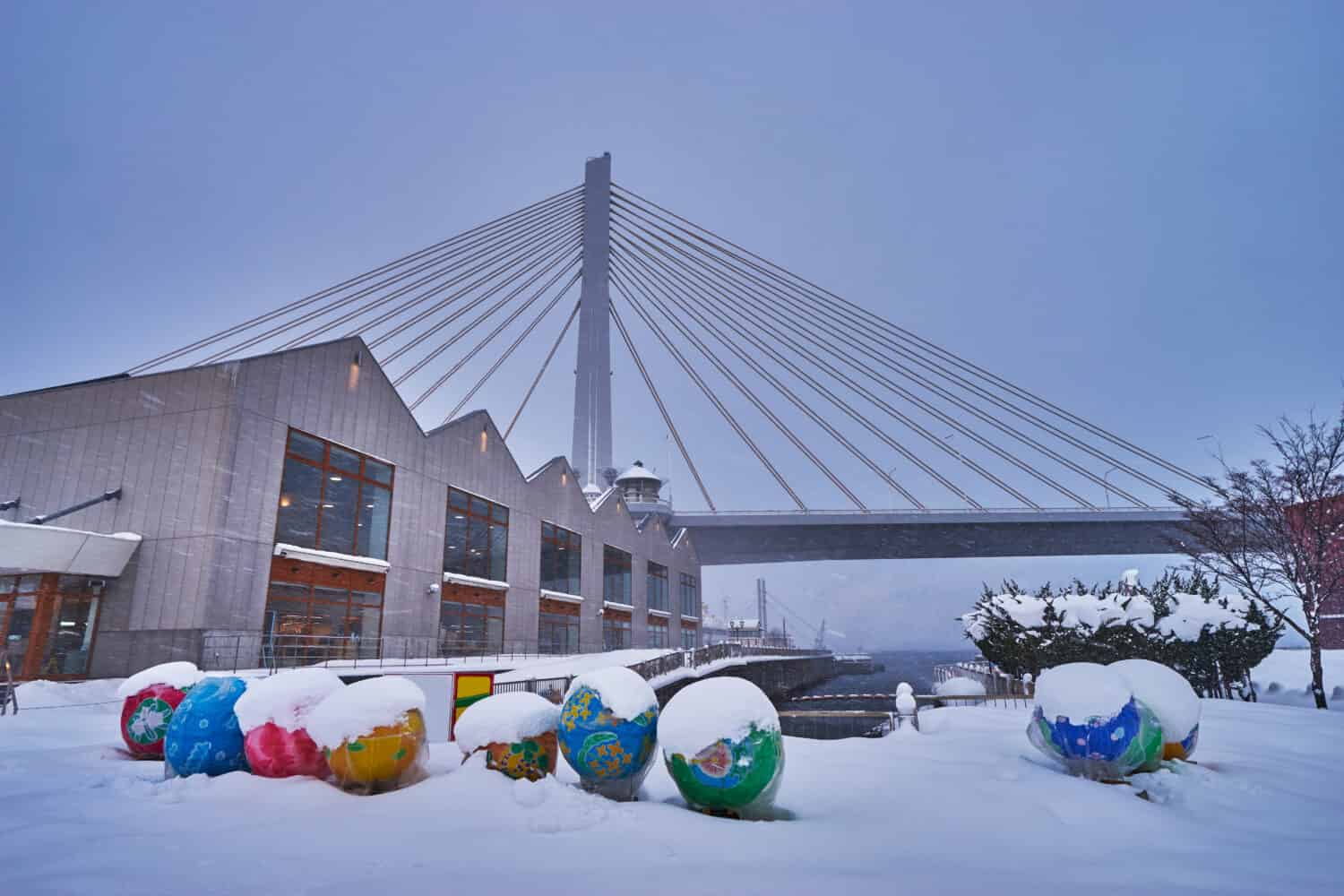
The city of Aomori experiences awe-inspiring snow blankets averaging 25 feet each winter.
©The HippoZoom/Shutterstock.com
Aomori is a mountain town in Japan that sits between two wide rivers. While scenic in the warmer months, this area experiences some of the heaviest snowfalls in the world. Thick fog, sharp winds, and bleak blizzards are not uncommon. Combined with minimalist structures and several ancient ruins, this isolated city can sometimes feel like the setting of an apocalyptic nuclear winter.
If you don’t mind braving the cold, skiing and snowing opportunities are abundant at the nearby Mount Hakkoda. Here you can see the local “Snow Monsters,” which are trees turned into frosty sculptures by blocks of snow and ice.
Must-sees for sci-fi feel: Aomori Bay Bridge, Aomori Museum of Art, Hakkoda Ski Resort
Thank you for reading! Have some feedback for us? Contact the AZ Animals editorial team.

